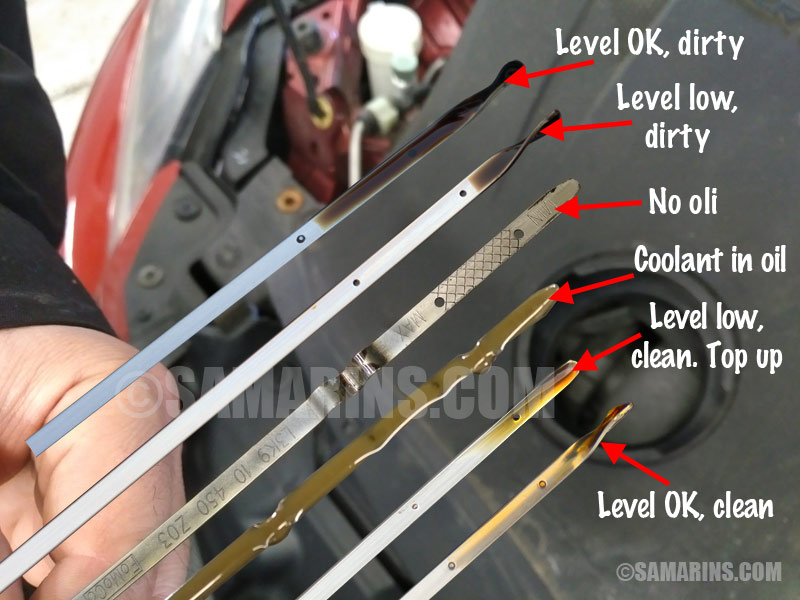Knowing when to check your car’s oil level can save you from costly repairs and keep your engine running smoothly. But do you really know the best time to do it?
Checking at the wrong moment can give you a false reading and leave you unsure about your car’s health. You’ll discover the simple, effective timing that ensures you get accurate results every time. Keep reading—your car will thank you for it.
Ideal Times To Check Oil
Checking your car’s oil level at the right time helps keep the engine healthy. Oil lubricates parts and stops damage. Knowing when to check can save you from costly repairs. Here are the best times to check your oil.
Before Starting The Engine
Check the oil before starting the engine for the day. The oil settles in the oil pan overnight. This gives a more accurate reading. Use the dipstick to see the oil level clearly. Wipe it clean, dip it again, then check the level.
After The Engine Has Cooled
Check oil after the engine cools down. Hot oil can give a false reading. Wait at least 10 to 15 minutes after turning off the engine. This allows oil to drain back into the pan. You get a true idea of the oil level this way.
Regular Maintenance Intervals
Check oil regularly as part of car maintenance. Follow your car manual for how often to check. Many recommend every month or every 1,000 miles. Regular checks help spot leaks or oil burning early. This keeps your engine running smoothly and lasts longer.

Credit: www.machinerylubrication.com
Factors Affecting Oil Level
Knowing the factors that affect your car’s oil level helps you check it at the right time. Oil level changes can happen due to many reasons. Understanding these reasons keeps your engine healthy and running smoothly.
Driving Conditions
Hard driving can make your car use more oil. Stop-and-go traffic or long trips at high speed affect oil levels. Hot weather also causes faster oil evaporation. Rough roads and heavy loads put extra stress on the engine. These conditions make oil checks more important and frequent.
Engine Age And Type
Older engines often use more oil than new ones. Worn parts can cause oil leaks or burning. Some engine types, like turbocharged engines, need oil checks more often. Modern engines may have better seals and burn less oil. Knowing your engine’s age and type helps plan oil checks.
Oil Consumption Rates
Every car uses oil at a different rate. Some cars burn oil faster due to design or condition. High oil consumption means checking oil more often. Low oil consumption allows longer intervals between checks. Keep track of your car’s usual oil use to avoid problems.
How To Check Oil Properly
Checking your car’s oil level is important for engine health. Doing it the right way gives you the correct reading. This helps you know when to add oil or visit a mechanic. Follow these simple steps to check oil properly.
Tools Needed
- Clean rag or paper towel
- Car owner’s manual
- Flat surface to park your car
Step-by-step Process
- Park your car on a flat surface and turn off the engine.
- Wait 5-10 minutes to let oil settle in the engine.
- Open the hood and find the dipstick, usually marked with a bright handle.
- Pull the dipstick out and wipe it clean with a rag or paper towel.
- Insert the dipstick fully back into its tube.
- Pull it out again and check the oil level on the stick.
- Oil should be between the minimum and maximum marks.
- If low, add oil in small amounts, then recheck the level.
Common Mistakes To Avoid
- Checking oil right after driving; the reading may be false.
- Not parking on a flat surface; this gives wrong levels.
- Using dirty rags that can contaminate the dipstick.
- Overfilling oil, which can damage the engine.
- Ignoring the owner’s manual for specific instructions.
Credit: driven2drive.com
Signs Of Low Or Dirty Oil
Checking your car’s oil regularly is important. Low or dirty oil can harm your engine. It causes problems that are easy to notice. Watching for signs helps you fix issues early. This keeps your car running smoothly and safely.
Engine Performance Issues
Low or dirty oil makes the engine work harder. The car may feel slow or weak. You might hear strange noises from the engine. Sometimes, the engine may stall or hesitate. These problems show oil needs attention.
Warning Lights
Most cars have oil warning lights on the dashboard. A light may turn on when oil is low or dirty. The oil pressure light or check engine light can appear. Never ignore these lights. They tell you to check oil right away.
Visual Oil Inspection
Look at the oil on the dipstick. Clean oil is clear and light amber. Dark, thick, or dirty oil means it needs changing. Also, check for metal flakes or sludge. These signs show the oil is old or contaminated.
Benefits Of Regular Oil Checks
Checking your car’s oil regularly is simple but very important. It helps keep your engine healthy and your car running smoothly. Regular oil checks catch problems early. They save money and avoid big repairs later. The benefits go beyond just the oil level. Good oil care protects many parts of your car.
Extending Engine Life
Oil lubricates the engine parts. It reduces friction and wear. Clean oil keeps the engine cool. Dirty or low oil causes damage fast. Checking oil often helps the engine last longer. It prevents breakdowns and keeps the car reliable.
Improving Fuel Efficiency
Proper oil levels help the engine run smoothly. This means less fuel is needed. Dirty oil makes the engine work harder. That wastes fuel and costs more money. Regular oil checks help save fuel every day.
Preventing Costly Repairs
Low or dirty oil can cause engine damage. Fixing an engine is expensive. Small oil problems are easy to fix early. Checking oil stops small issues from growing. It saves money on repairs and keeps the car safe.

Credit: www.samarins.com
Frequently Asked Questions
When Should I Check My Car Oil Level?
Check your car oil level when the engine is cold or has been off for 10 minutes. This ensures accurate readings and prevents burns from hot engine parts.
How Often Should I Check My Car Oil?
It’s best to check your car oil at least once a month. Regular checks prevent engine damage and maintain optimal performance.
Can I Check Oil Level After Driving?
Wait at least 10 minutes after driving before checking oil. This allows oil to settle for an accurate measurement.
Why Is Checking Oil Level Important?
Checking oil level prevents engine wear and costly repairs. Proper oil levels ensure smooth engine operation and longer vehicle life.
Conclusion
Checking your car’s oil level regularly keeps your engine healthy. Always check the oil when the engine is cool. Early mornings or after the car has rested are best. Keep the car on level ground for an accurate reading. Regular checks help spot leaks or low oil early.
This simple habit saves money and prevents breakdowns. Don’t wait for warning lights to appear. A small effort now avoids big problems later. Stay safe on the road with proper oil care.
Recent Posts
Don't let a little oil leak turn into a big, expensive problem! We'll help you identify common causes and tackle them before they damage your engine.
Wondering if your car oil is a health hazard? We're diving into whether car oil is carcinogenic so you can make informed decisions about your health and the environment.

